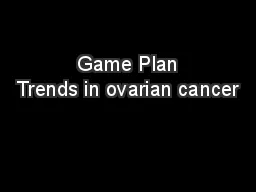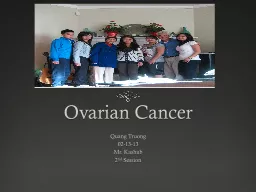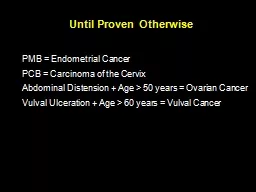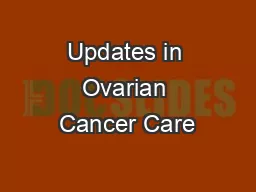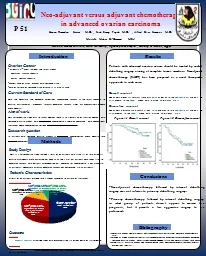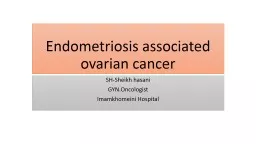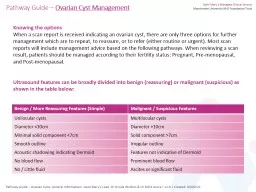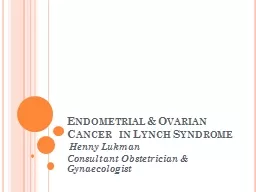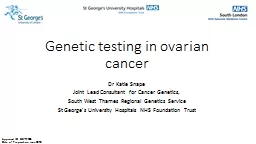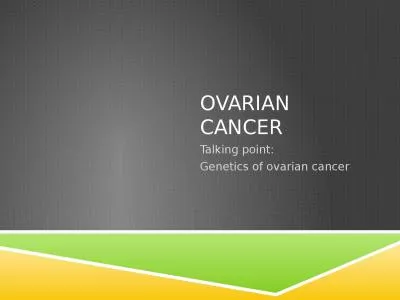PPT-Game Plan Trends in ovarian cancer
Author : alexa-scheidler | Published Date : 2020-04-10
Diagnostic workup Treatment The most commonly occurring gynecologic cancer is Cervical Endometrial Ovarian Vulvar The gynecologic cancer with the highest death rate
Presentation Embed Code
Download Presentation
Download Presentation The PPT/PDF document " Game Plan Trends in ovarian cancer" is the property of its rightful owner. Permission is granted to download and print the materials on this website for personal, non-commercial use only, and to display it on your personal computer provided you do not modify the materials and that you retain all copyright notices contained in the materials. By downloading content from our website, you accept the terms of this agreement.
Game Plan Trends in ovarian cancer: Transcript
Download Rules Of Document
" Game Plan Trends in ovarian cancer"The content belongs to its owner. You may download and print it for personal use, without modification, and keep all copyright notices. By downloading, you agree to these terms.
Related Documents

